Best Programming Books for Haskell to Buy in November 2025
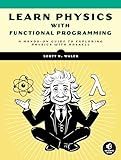
Learn Physics with Functional Programming: A Hands-on Guide to Exploring Physics with Haskell


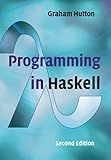
Programming in Haskell


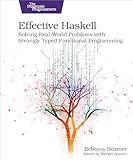
Effective Haskell: Solving Real-World Problems with Strongly Typed Functional Programming


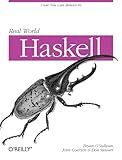
Real World Haskell
- QUALITY ASSURANCE: THOROUGHLY INSPECTED FOR MINIMAL WEAR AND TEAR.
- COST-EFFECTIVE: SAVE MONEY WITH AFFORDABLE PRE-OWNED TREASURES.
- ECO-FRIENDLY CHOICE: SUPPORT SUSTAINABILITY BY BUYING USED BOOKS.



Learn You a Haskell for Great Good!: A Beginner's Guide
- QUALITY ASSURED: THOROUGHLY INSPECTED AND MARKED AS GOOD CONDITION.
- AFFORDABLE PRICES: ENJOY GREAT SAVINGS ON QUALITY USED BOOKS!
- ECO-FRIENDLY CHOICE: REDUCE WASTE BY CHOOSING PRE-OWNED BOOKS TODAY!



Soar with Haskell: The ultimate beginners' guide to mastering functional programming from the ground up


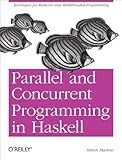
Parallel and Concurrent Programming in Haskell: Techniques for Multicore and Multithreaded Programming


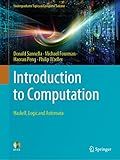
Introduction to Computation: Haskell, Logic and Automata (Undergraduate Topics in Computer Science)



Get Programming with Haskell


In Haskell, data types are used to define new types of values. Defining and using data types is an important aspect of the language as it allows programmers to create their own custom types.
To define a data type in Haskell, you use the data keyword followed by the name of the type. This is typically done in a separate module or at the top level of the Haskell file. Here's an example:
data Person = Person String Int
In this example, we define a data type called Person, which represents a person with a name (String) and an age (Int). The Person type has a single constructor also called Person that takes two arguments.
To create an instance of a Person, you can use the constructor like a function:
john :: Person john = Person "John Doe" 30
Here, we create a Person named john with the name "John Doe" and age 30.
Once you have defined a data type, you can pattern match on it to extract information from its instances using the case expression or pattern matching in function definitions. For example:
getAge :: Person -> Int getAge (Person _ age) = age
In this example, we define a function getAge that takes a Person as input and returns their age. We pattern match on the Person type using a wildcard _ for the name and extract the age.
Data types in Haskell can also have multiple constructors, allowing for different variations of the type. Each constructor can have its own set of arguments. For instance:
data Shape = Circle Float | Rectangle Float Float
In this case, we have a Shape type with two constructors: Circle and Rectangle. The Circle constructor takes a single argument of type Float that represents the radius, while the Rectangle constructor takes two arguments of type Float representing the width and height.
Using these constructors, you can create instances of Shape:
circle :: Shape circle = Circle 2.5
rectangle :: Shape rectangle = Rectangle 3.0 4.0
In summary, defining and using data types in Haskell involves using the data keyword followed by the name of the type and its constructors. Instances of the type can be created using these constructors, and pattern matching can be used to operate on the data contained within them.
How to define a Bool data type in Haskell?
In Haskell, the Bool data type is already defined in the standard library. It has two possible values: True and False. To use the Bool data type in Haskell, you don't need to explicitly define it. Here are a few examples of working with Bool values:
-- A simple function that returns True if a number is even and False otherwise isEven :: Int -> Bool isEven n = n `mod` 2 == 0
-- A function that combines two Bool values using logical AND (&&) bothTrue :: Bool -> Bool -> Bool bothTrue x y = x && y
-- Pattern matching on Bool values isWeekend :: Bool -> String isWeekend True = "It's the weekend!" isWeekend False = "It's a weekday."
In the examples above, you can see how Bool values can be used in function signatures, as function arguments, and how pattern matching can be used to handle different cases depending on whether a Bool value is True or False.
How to define a set data type in Haskell?
In Haskell, sets can be defined using several different approaches. Here are two common ways to define sets in Haskell:
- Using the "Data.Set" module: You can import the "Data.Set" module to make use of the built-in Set data type. Here's an example:
import qualified Data.Set as Set
-- Define a set of integers mySet :: Set.Set Int mySet = Set.fromList [1, 2, 3, 4, 5]
In this example, mySet is a set of integers containing the elements 1, 2, 3, 4, and 5. You can perform various operations on sets using functions provided by the "Data.Set" module, such as inserting, deleting, and checking for membership.
- Using lists and nub function: Alternatively, you can define sets using lists and the nub function from the "Data.List" module. While this approach is less efficient for large sets, it can be useful for smaller sets or when using Haskell in an educational context. Here's an example:
import Data.List (nub)
-- Define a set of characters mySet :: [Char] mySet = nub ['a', 'b', 'c', 'a', 'b']
In this example, mySet is a list of characters, but it contains only unique elements due to the nub function. The result will be ['a', 'b', 'c'], which represents a set in Haskell.
Note: Remember that the second approach is less efficient as it can become slow for large sets.
What are the basic built-in data types in Haskell?
The basic built-in data types in Haskell are:
- Bool - represents boolean values (True or False).
- Char - represents single characters.
- String - represents a list of characters.
- Int - represents integer numbers (bounded).
- Integer - represents arbitrary precision integers (unbounded).
- Float - represents single-precision floating-point numbers.
- Double - represents double-precision floating-point numbers.
- (), pronounced "unit" - represents an empty tuple or no value.
Additionally, Haskell provides built-in support for defining user-defined data types such as data types and type synonyms. These allow you to create your own custom data types based on these basic built-in data types.
How to define an Integer data type in Haskell?
In Haskell, you can define an Integer data type by using the Integer keyword. Here's an example:
myInteger :: Integer myInteger = 42
In this example, we define a variable myInteger of type Integer and assign it the value 42.
How to define a binary tree data type in Haskell?
To define a binary tree data type in Haskell, you can use the following code:
data BinaryTree a = EmptyTree | Node a (BinaryTree a) (BinaryTree a)
This code defines a new data type called BinaryTree with two possible constructors: EmptyTree represents an empty tree, and Node represents a non-empty tree node. Each Node consists of a value of type a, and two child trees of type BinaryTree a. This definition assumes that the binary tree can have values of any type a.
Here's an example of how you can create a binary tree using this data type:
tree :: BinaryTree Int tree = Node 1 (Node 2 EmptyTree (Node 3 EmptyTree EmptyTree)) (Node 4 EmptyTree EmptyTree)
In this example, the binary tree tree has the value 1 at the root, a left child tree with the value 2 and a right child tree with the value 4. The left child tree itself has a right child tree with the value 3.
What is the purpose of data types in Haskell?
The purpose of data types in Haskell is to define the structure and behavior of values that can be used in the program. They allow programmers to specify the possible values a variable can hold and the operations that can be performed on those values. Data types help ensure type-safety by preventing incompatible operations and providing compile-time checks to catch potential errors. They also enable the creation of abstract and reusable code by encapsulating related values and operations into a single unit.
